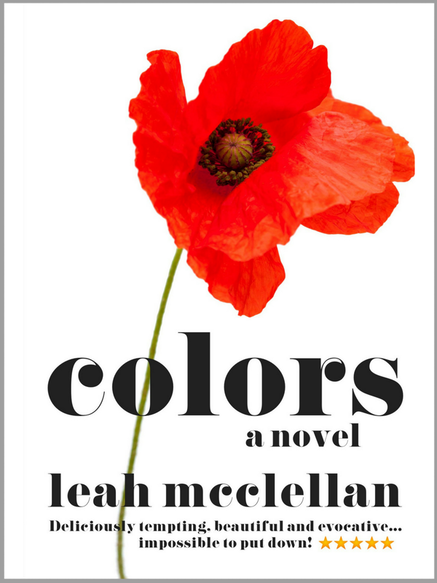Writing Romantic Love Scenes from Sweet to Steamy Hot Writing romantic love scenes—and doing it well—can be challenging for any writer. Aspiring novelists, especially, struggle with how much to tell and how to tell it. Even a “sweet” or mildly sensual scene isn’t easy. And unabashed writers with no qualms about “open door” encounters are likewise challenged to get a blazing-hot situation exactly right. Writing any type of love scene takes skill, practice, and an understanding of the elements that make the good ones work. And setting a goal for the type of scene you want to portray is half the battle won. Romantic Love Scenes Are Expected in the Romance Genre By definition, romance centers on relationship development. And that means some degree of physical attraction is present, no matter how chaste or intimate. Other genres such as science fiction, fantasy, young adult, and speculative fiction—any genre or hybrid, really—often highlight a romantic relationship, but it’s not required. Scenes Range in Degrees of Intimacy and Detail I think of romantic scenes as sweet, sensual-spicy, or hot with varying degrees on the scales. Most authors and publishers categorize novels and specific scenes in similar terms. Sweet love scenes In the strictest sense, “sweet” means profanity isn’t used, and physical intimacy is limited to hand-holding and perhaps a stolen kiss or two. At the other end, a few mild swear words, a long kiss, warm hugs, or a subtle suggestion of deeper involvement may be included, but the relationship’s development in a sweet novel depends on emotional rather than sexual bonding. Other terms for sweet include “clean” and “wholesome.” I don’t prefer them, however, because they suggest that normal human sexuality is dirty, unclean, or unwholesome. Sensual-spicy scenes Sensual-spicy means romance may be passionate, but it relies more on metaphors or hints, after-the-fact evidence, and emotional reactions rather than graphic details. On the tame end, if the lovers head for the bedroom, it’s a fade out, and the doors are closed. On the spicy side, the relationship’s consummation might be lengthy and explicit, but such a scene isn’t repeated. The Twilight Saga is a good example of a sensual-spicy love story, especially in several scenes that take place in the final book of the series. On Bella and Edward’s honeymoon, they hold hands on a beach under a full moon, and Edward leads her to “deeper water.” The next morning, we find that Edward has destroyed the furniture and pillows, while Bella is “totally and completely blissed out” albeit a bit bruised by Edward’s superhuman strength. She’s pleased by how they “fit together like corresponding pieces, made to match up.” Later, Bella begs Edward for sex, though not in so many words. He’s refused to touch her after the first time for fear of hurting her. But he gives in, it’s a fade-out, and the next morning Bella’s shredded black lingerie and more destruction are evidence of exactly what took place. Another scene takes place near the end. This scene is explicit, but the tame language makes it easy to miss without a close reading. Hot sex scenes These can be explicit but tasteful, detailed but restrained. The doors may be wide open, and specific acts and body parts might be mentioned. The scene may be erotic, but unless similar scenes exist, the novel itself is simply a hot romance. Erotica and porn Briefly, erotica exists within the same framework as any romance novel, but the sexual aspects of the relationship drive the character’s development and move the plot forward. Shades of Gray fits into this category. Porn, on the other hand, places the emphasis on the sex with a plot that simply provides a framework and timeline. Writing an Effective Romantic Love Scene Less is more, even if you’re writing a super-hot, wildly sexy story. According to Jessi Rita Hoffman, a writer, editor, and writing coach, one of the most common problems is “the flaw of excess.” That’s a typical issue for many new writers, but it can mean disaster in a love scene. Think minimalism. Skip the adjectives and adverbs as much as possible. Rough draft: “His big, deep-blue eyes bore right down to the very deepest sanctuary of her soul as his warm, full red lips pressed against her own and caused a shiver to spread over her skin.” This might be what you see in your imagination as you write, but let your readers imagine, too. Revised: “His dark eyes penetrated her soul as he pressed his warm lips against hers. She shivered.” Think reaction more than action. Focus on the emotions, the sensations, and the characters’ thoughts for more impact instead of describing the action in detail. One short, sweet kiss becomes a lengthy passage that builds suspense and keeps the tension going when the focus is on the emotional response. Here, from Eclipse, the third book in The Twilight Saga, is a good example. “His golden eyes were smoldering, just inches away, and his breath was cool against my open lips. I could taste his scent on my tongue. I couldn’t remember the witty response I’d been about to make. I couldn’t remember my name. He didn’t give me a chance to recover. If I had my way, I would spend the majority of my time kissing Edward. There wasn’t anything I’d experienced in my life that compared to the feeling of his cool lips, marble hard but always so gentle, moving with mine.” Think realism. Your characters are human with all the flaws and imperfections that everyone has. Romantic love scenes aren’t perfect in real life, and they don’t need to be in fiction, either. Awkwardness, embarrassment, hesitancy, humor, worry, and silliness are all a part of life. When it suits the characters or situation, don’t hesitate to let someone get a leg cramp during a first kiss, burp accidentally, fall off a sofa while things are heating up, or spill wine accidentally (or not) on someone’s lap. Misunderstandings happen, too, and how they’re worked out (or not) reflects the characters’ personalities and relationship growth. Think simple language and choose terms carefully. I enjoy reading well-written, interesting novels—romance or otherwise—with almost any intimacy level. And as a young adult, I read countless historical romances, but at one point I thought, “If I see the term “male member” one more time, I’m done!” If you want to use euphemisms (here’s a list), make sure they fit with your characters’ personalities, attitudes, and normal vocabulary. Don’t choose vocabulary that you, as the author, are comfortable with or the style you would use. Choose what your characters would use. For practice, try writing a scene in which a character describes the intimate experience to his or her best friend. Would they use specific terminology or only hint at what took place? Follow their example. Think detail and what the story needs. How far do you want to go? What kinds of details? If you’re writing a sweet romance, the rules keep you in check. But sensual-spicy and hot love scenes offer plenty of leeway, so write what the story needs. In my own novel, Colors, the relationship and physical attraction between Autumn and her chef, Jory, is only slightly less important than the main plot. And although Autumn has filed for divorce and she’s separated, they’re avoiding physical intimacy until her divorce is final. Despite a few slips, they maintain their agreement, and as their relationship deepens, tension builds. And when they finally come together, it’s a big deal. It has to be. With all the suspense that leads up to that moment, a fade-out would be out of proportion and a disappointment to readers. A Final Note: You Don’t Want to Win the Bad Sex in Fiction Award The best way to learn how to write well is to read what good writers have written. That includes romantic love scenes whether they’re sweet or blazing hot. Take a close look at love scenes in popular novels and best sellers that match your preferred intimacy level. Take notes on length, details, language, realism, emotions, and reactions. What makes it good? What doesn’t appeal to you? And take a look at some of the winners of the Bad Sex in Fiction Award. Most are explicit, but they demonstrate what to avoid in your own love scenes. Make sure your novel’s a different kind of winner.  Leah McClellan is an editor, author, and non-fiction writer who champions strong female characters and their male counterparts: men who live outside the traditional man box. Originally from the snowy hinterlands west of Philadelphia, she enjoys travel, reading, and long bike rides on sunny Florida trails. Leah, thank you for being my guest. Please come back again! DK
Colleen
4/11/2019 05:12:55 am
Leah, I enjoyed your explanations on different levels of romance. Good article. 4/11/2019 05:14:49 am
Great advice. I'd add be sure to add emotion, both before, during and after, regardless of how explicit you get. 4/11/2019 12:07:23 pm
Thanks, Jennifer. I agree—capture the emotions no matter what!
Mary Morgan
4/11/2019 07:43:39 am
Wonderful post, Leah. Thank you for sharing!
CB Clark
4/11/2019 07:48:51 am
Fascinating post! You certainly gave me food for thought. Nothing is more challenging than writing love scene. Thanks for sharing. 4/11/2019 02:05:46 pm
Thanks CB. There's definitely a lot to think about with love scenes. And they're challenging for so many reasons!
Laura Strickland
4/12/2019 08:23:11 am
Interesting post! Just as they say sex mostly takes place in our minds, I feel it must take place mostly in our characters' minds too. Great reminders! 4/12/2019 01:49:59 pm
That's an excellent point, Laura! I think everyone's heard that sex is in our minds more than anything (and I believe that). Good way to remember to focus on emotions and whatever is in a character's head just as much as (or more than) the physical. Comments are closed.
|
Archives
July 2024
Categories |
 RSS Feed
RSS Feed